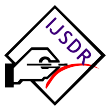Imp Links for Author
Imp Links for Reviewer
Research Area
Subscribe IJSDR
Visitor Counter
Copyright Infringement Claims
Indexing Partner
|
Published Paper Details
|
|
| Paper Title: | NEWER THERAPIES IN HURLER SYNDROME |
| Authors Name: | B.PALLAVI , P.SAI DIVYA GOUD , G.POOJA GOUD , K.SHRAVANI , Dr. SRI SWETHA MEKA |
| Unique Id: | IJSDR2311099 |
| Published In: | Volume 8 Issue 11, November-2023 |
| Abstract: | : Hurler syndrome is an inherited and progressive multisystem disorder characterised with physical deformities and developmental anomalies. It is caused by the deficiency of lysosomal enzyme alpha-L-iduronidase, which results in intralysosomal accumulation of dermatan sulphate and heparin sulphate and in turn causes cell dysfunction and death in early child hood. It is also known as mucopolysaccharidosis type IH (MSP-IH) or lysosomal storage disease. This genetic disorder results in the build-up of large sugar molecules called glycosaminoglycans (GAGs) in lysosomes, as alpha-L iduronidase enzyme is responsible for breaking down GAGs. The deposition of GAG causes enlargement and thickening of various organs like heart, spleen, liver, muscles, connective tissues, joints, and the central nervous system causing severe functional impairment. 1919, Getrud Hurler, a German paediatrician introduced this hurler syndrome. He described that clinical symptoms of this disease like corneal clouding, skeletal abnormalities, and mental retardation are similar to disease called "Gargoylism" it had been described in 1917 by Charles A. Hunter. Hurler did not mention Hunter's paper. Because of the communications interruptions caused by World War I, it is likely that he was unaware of his study. Hurler syndrome now refers to MPS IH, while Hunter syndrome refers to MPS II. In 1962, a milder form of MPS I was identified by Scheie, leading to the designation of Scheie syndrome.[4]. Children with hurler syndrome are generally not born with signs but develop symptoms during the first year of life. Developmental delay may become apparent by the age of 1 to 2 years, with a maximum functional age of 2 to 4 years. The average age of mortality is 5 years, and nearly all patients die before 10 years of age. Gene therapy may provide a future alternative human treatment for mucopolysaccharidosis type disorder. |
| Keywords: | Mucopolysaccharidosis , Alpha-L-Iduronidase, Glycosaminoglycans [GAGs], Dermatan sulphate, Heparin Sulphate |
| Cite Article: | "NEWER THERAPIES IN HURLER SYNDROME", International Journal of Science & Engineering Development Research (www.ijsdr.org), ISSN:2455-2631, Vol.8, Issue 11, page no.656 - 660, November-2023, Available :http://www.ijsdr.org/papers/IJSDR2311099.pdf |
| Downloads: | 000338719 |
| Publication Details: | Published Paper ID: IJSDR2311099 Registration ID:209386 Published In: Volume 8 Issue 11, November-2023 DOI (Digital Object Identifier): Page No: 656 - 660 Publisher: IJSDR | www.ijsdr.org ISSN Number: 2455-2631 |
|
Click Here to Download This Article |
|
| Article Preview | |
|
|
|
Major Indexing from www.ijsdr.org
| Google Scholar | ResearcherID Thomson Reuters | Mendeley : reference manager | Academia.edu |
| arXiv.org : cornell university library | Research Gate | CiteSeerX | DOAJ : Directory of Open Access Journals |
| DRJI | Index Copernicus International | Scribd | DocStoc |
Track Paper
Important Links
Conference Proposal
ISSN
 |
 |
DOI (A digital object identifier)
  Providing A digital object identifier by DOI How to GET DOI and Hard Copy Related |
Open Access License Policy
Social Media
Indexing Partner |
|||
| Copyright © 2024 - All Rights Reserved - IJSDR | |||






Facebook Twitter Instagram LinkedIn